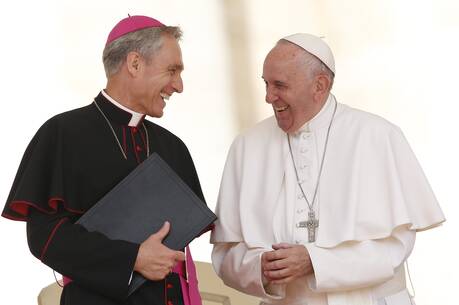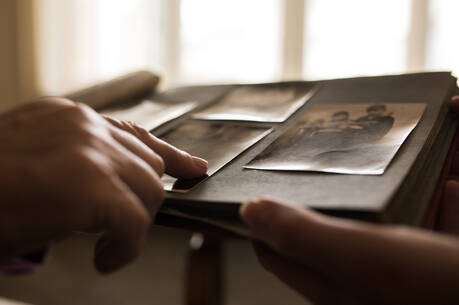4,450 Priests Accused of Abusing 11,000 Children
CNN reported on Feb. 16 that, according to a draft report it had obtained about sexual abuse of minors by U.S. Catholic priests and deacons, roughly 4,450 members of the clergy have been accused of abusing a total of 11,000 minors between 1950 and 2002. John Jay College of Criminal Justice in New York conducted a nationwide study last year of sexual abuse of minors by Catholic clergy and plans to release its report Feb. 27. The study was commissioned by the independent National Review Board established by the U.S. bishops in 2002 to help them deal with the crisis of sexual abuse by members of the clergy. In a written statement, the college said, The numbers reported in the media were apparently taken from a preliminary report [by John Jay researchers] completed in January 2004.
By mid-February about 90 of the 195 Catholic dioceses in the United States had released summaries of the local statistical data they had supplied to the John Jay researchers. But many of the local summaries did not provide breakdowns by the age of the alleged victims or the number of clerics facing more than one accusation.
The CNN report said there were 110,000 priests serving in the United States during that timeindicating that nationally, 4 percent of all U.S. priests serving during those years have been accused of sexual misconduct with a minor. The figures indicate that more priests were involved in abuse than the number predicted by Thomas G. Plante, but there were fewer victims (Am., 1/5). The Santa Clara University professor of psychology had predicted figures of 3,000 priests and 24,000 victims.
According to CNN, the national draft report said 78 percent of the alleged victims were 11 to 17 years old at the time of the abuse, 16 percent were 8 to 10 years old, and 6 percent were 7 or younger.
CNN said more than half of the accused clerics faced only one allegation, 25 percent had two or three allegations, 13 percent faced four to nine and 3 percent had 10 or more. The 147 priests who comprised the 3 percent with the most allegations accounted for about 3,000 of the 11,000 alleged victims, CNN said.
In later television and Internet versions of its story, CNN added that of the 11,000 allegations cited in the draft report it saw, 6,700, or 61 percent, were substantiated. It said 1,000 could not be substantiated and 3,300 were not investigated because the priests involved were no longer alive.
A CNN reporter told America that according to the study, the amount of abuse increased in the 1960’s, peaked in the 1970’s, declined in the 1980’s and returned to the level of the 1950’s in the 1990’s. This could indicate that most bishops began to deal with the issue in the 1980’s. Only a few of the serial abusers (those with 10 or more allegations), for example, were still active in the 1990’s. Abuse advocates argue, however, that victims do not come forward until years after the abuse takes place.
CNN said reasons cited for the extent of the abuse in the church included failure to grasp the gravity of the problem, overemphasis on avoidance of scandal, use of unqualified treatment centers, misguided willingness to forgive and insufficient accountability. It cited the John Jay study as its source for those assessments. A statement from the college said it was inaccurate to attribute such conclusions to its study, which only collected data and did not draw conclusions.
When the John Jay study is released, it will be the first comprehensive national attempt by any major organization or profession in the United States to study and report publicly on the extent of sexual abuse of minors within its ranks.
In preparing a second report, also to be released on Feb. 27, the National Review Board interviewed about 75 bishops, priests, abuse victims and experts from such areas as treatment, law enforcement and child protection. The board’s report, which focuses on causes and context, is to serve as a basic framework for establishing a more extensive, scientific study into the reasons behind the sexual abuse crisis.
Lawyers in Abuse Cases Should Be Accountable
Greater public scrutiny of lawyers for child victims of sexual abuse may be needed to assure that litigation is not psychologically harmful to victims and does not bankrupt organizations that serve children, wrote David Finkelhor, director of the Crimes Against Children Research Center at the University of New Hampshire. Many professionals have a sense that for some survivors, civil litigation ends up exacerbating their trauma rather than alleviating it, Finkelhor wrote in the November issue of Child Abuse and Neglect, a monthly magazine for child-care specialists published by the International Society for Prevention of Child Abuse and Neglect. How are the plaintiffs recruited? What kinds of informed consent procedures are undertaken with them? What are the traumatizing portions of the litigation process, and how are these stresses managed and mitigated? the report asked. Finkelhor estimates that 200,000 children are sexually abused each year in the United States.
Church Must Work With Experts to Prevent Abuse
In confronting the crisis of sexual abuse by members of the clergy, the Catholic Church needs to work more closely with scientific experts to identify potential perpetrators and make sure they cannot harm the young, a soon-to-be-published Vatican report says. The 220-page report, Sexual Abuse in the Catholic Church: Scientific and Legal Perspectives, represents the Vatican’s first comprehensive effort to examine recent research into the psychological causes and types of abuse, screening procedures, recidivism rates, effects on child victims and the possibility of successful therapy for abusers.
Although cautioning that each case of sexual abuse against minors is unique, it sketched general characteristics of priest-abusers and identified a wide range of possible risk factors, including sexual immaturity, narcissistic traits, alcohol and drug abuse, hormonal abnormalities and endocrine disorders. While drawing on the experience of U.S. bishops in confronting sexual abuse, the report made a case against the U.S. policy of zero tolerance for clerical abusers. It suggested that the church and society are better off when abusive priests are kept in the priesthood but away from children.
The report, to be published by the Pontifical Academy for Life, was based on a Vatican-sponsored symposium of scientific experts held last April. The scientific experts, all of them non-Catholics working in the fields of psychiatry, psychology and psychotherapy, appeared to agree unanimously that zero tolerance goes too far. They said it effectively prevents troubled priests from seeking help before they commit abuse, removes leverage on abusive priests to accept treatment, can leave priests emotionally devastated and in effect passes responsibility for an abusive priest on to the larger societywhere there is less monitoring and supervision of his behavior.
Bishops Get Draft of English Mass Prayers
Bishops in English-speaking countries have been sent copies of a draft of a new translation of the main prayers used at Mass. Copies were sent out on Feb. 13 to all Latin-rite bishops in the United States, who were asked to comment on the draft by May 15 so that the International Commission on English in the Liturgy can consider suggested revisions during its July meeting. The new text is the first English translation of Mass prayers resulting from the 2002 publication of the third edition of the Roman Missal in Latin and from new translation rules contained in the 2001 Vatican instruction, Liturgiam Authenticam (Authentic Liturgy).
The instruction asked for some specific changes, including that English translations of the Creed return to the first person singularI believeused in the original Latin and most other languages. The Vatican also suggested a more literal translation of the response to the priest’s greeting, The Lord be with you; the people answer, And with your spirit.
News Briefs
The Diocese of Springfield, Mass., has hired an experienced law enforcement professional to monitor members of the clergy who have been removed from ministry for sexually abusing a child. It joins several other dioceses that have adopted this practice from the secular parole system to supervise offenders. Experts experienced in monitoring programs told The Catholic Observer, Springfield’s diocesan newspaper, that the hiring of such monitors can significantly reduce the risk of further abuse.
Indian church groups have condemned an incident in which Christian women were stripped and had their heads shaved and a male pastor disappeared. The Catholic Bishops’ Conference of India and the National Council of Churches in India said on Feb. 16 that the incident was indicative of continuing anti-Christian violence in Orissa state.
With Haiti on the brink of civil war, that country’s bishops on Feb. 16 urged political leaders to make a personal and patriotic decision to ensure peace.
The Hampden County, Mass., district attorney’s office is investigating allegations that Thomas L. Dupre, the recently retired bishop of Springfield, Mass., engaged in sexual misconduct with minors.
Saying that he finds himself in the most surreal situation imaginable, Bishop Howard J. Hubbard of Albany, N.Y., pledged to leave no stone unturned to prove my innocence against accusations that he had sexual relations with two men during the 1970’s.
Bishop Thomas J. O’Brien of Phoenix, Ariz., was convicted on Feb. 17 of leaving the scene of a fatal automobile accident on June 14, 2003. The felony was apparently the most serious criminal conviction of a bishop in U.S. history.








Then (all this in five pages), from the bleak to the absurd, when we learn that someone in Rome is still exercised over whether we should say, “And with your spirit” or “And also with you” at Mass. A great step forward for us all, the solution to that problem.
True: Father Greeley does offer us some ray of hope (“Religious Decline in Europe?”). His article would be even more consoling if one didn’t have the nagging doubt that it was reporting on poll numbers rather than on vibrant personal faith, on Christendom’s religion rather than on Christianity, on superficial markers of religion rather than on truly interiorized Gospel faith.
Perhaps the next issue of America should come in a plain brown wrapper marked: “not to be opened by the faint of heart (or faith).”